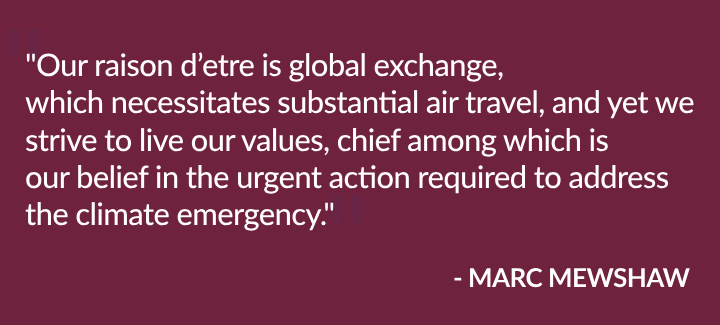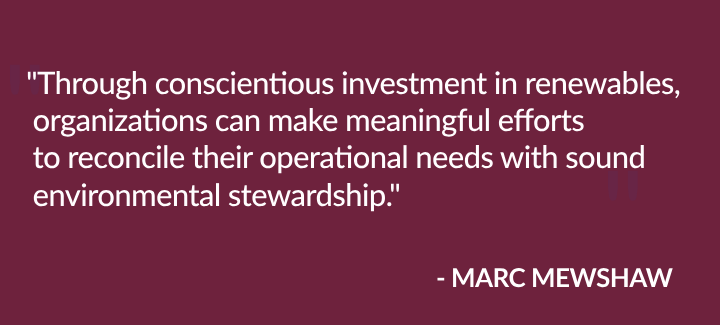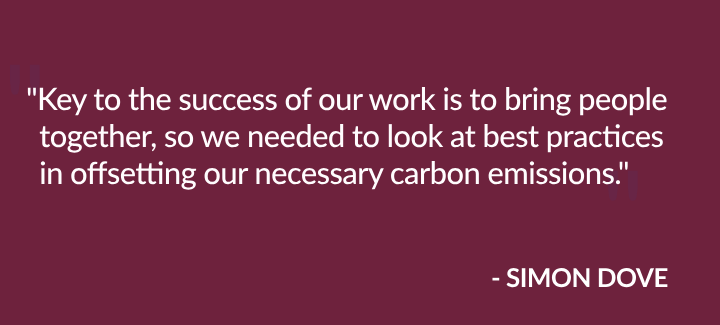How arts organizations can consider their environmental impact and develop policies to offset their carbon footprint
CEC ArtsLink is committed to the necessary and urgent actions to reduce carbon emissions. Since 2019, we have been prioritizing support for the artists whose work raises awareness and catalyzes community action around social and environmental justice. Last fall, we adopted our first sustainability policy mitigating the carbon footprint of our programs generated by international air travel.
In this conversation, our Trustee Marc Mewshaw , Board Chair Skip Rankin, and Executive Director Simon Dove delve into various aspects of the policy’s inception, implementation, and monitoring, as well as introduce arts organizations leading the way in sustainability practices.
We invite our colleagues in the cultural mobility field to consider their environmental impact and to find the carbon footprint offset models that work for them and for a better, greener world. Have an inspiring example? Please share with us!








